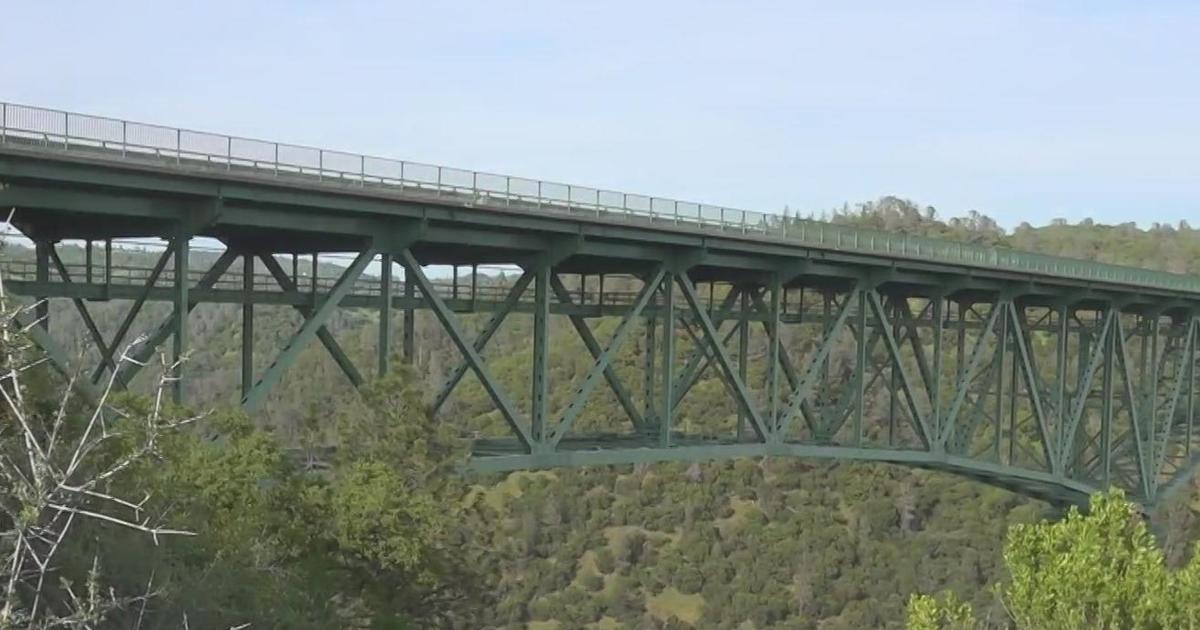California Drought May Exacerbate Wildlife-Human Encounters
LOOMIS, Calif. (AP) - The scarcity of food in the wild has been blamed for unusual animal activity during California's drought including a recent bear attack, mountain lion sightings and an uptick in orphaned animals.
But the devastating four-year drought that's dried up streams and vegetation isn't the sole cause, state officials and experts say. Instead, they say the drought is exacerbating long-term trends and natural animal behaviors in a state that is becoming increasingly developed
Pools and lush gardens in residential areas are attractive to animals forced out of their normal homes. The construction of roads and business developments, along with man's increased movement into rural areas, had begun fragmenting habitats before the drought.
"You have a longer-term trend exacerbated by this acute change in water availability," said Dick Cameron, a scientist who studies habitat fragmentation for The Nature Conservancy in California.
Diane Nicholas believes a dearth of water and fresh vegetation in the Sierra Foothills is behind what's been the busiest year for her fawn rescue in Loomis, California, near Sacramento. For nine years, the Kindred Spirits Fawn rescue has cared for hundreds of fawns found injured on roads or caught in fences, near dead mothers in the wild or alone on suburban lawns.
Nicholas, a 63-year-old interior designer, says she received more baby deer in April than in any other year and is on track to rehabilitate a record 200.
Some were found stuck in nearby canals where they had gone in search of water. Five fawns came to her weighing less than 2 pounds, the first she's ever seen them so small. Others were found near underweight mothers that apparently died in childbirth.
"These does have been in such poor health that when they give birth it takes it all out of them," Nichols said. "We have to assume it's a lack of food and water."
Marc Kenyon, who oversees the California Department of Fish and Wildlife's human conflict program, says rangers are also seeing an uptick in orphaned mountain lion kittens and bear cubs. He says officials need years of data before determining a drought link because unusual trends may also be driven by climate change, disease or genetics.
Meanwhile, Nichols isn't only worried about deer in the drought. A bear wandered on her property for the first time.
Unusual bear activity around the state has raised alarms. An increased number of bears - in new areas - have been spotted in Bakersfield in Southern California. Statewide, there has been an uptick in black bear-human encounters, including a recent non-fatal attack on a man who lives near Yosemite National Park.
Wildlife officials say it's indisputable that some bears are expanding their search for food, but populations have been thriving.
"Just the sheer fact you see animals around you doesn't mean it's a true drought relationship," said Jason Holley, a supervising wildlife biologist for the state. "Most large animals are drought-adapted in California. They've gone through this stuff before, and they'll find resources they need."
Even though California is almost entirely in drought, food supplies have been replenished in pockets of the state. Summer thunderstorms in the Sierra Nevada are helping mushrooms and grass sprout in swaths of forestland.
Fraser Schilling, co-director The Road Ecology Center at the University of California-Davis, says his study of 29,000 road kill reports from volunteers over five years makes him think animals seem to be crossing more roads in the search for food.
"There are so many stresses on wildlife populations from things that are our responsibility that when drought comes along, it really slams them up against the ropes," Shilling said.
___
Follow Fenit Nirappil on Twitter at www.twitter.com/fenitn .
Copyright 2015 The Associated Press.



